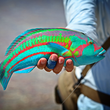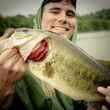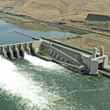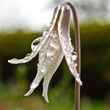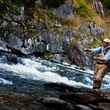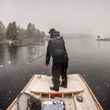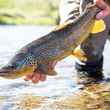For years, thingamabobbers have been my go-to strike indicators. When I'm expecting truly subtle strikes and need something very sensitive, I'll reach for yarn, but otherwise a bobber is typically what I'll choose. They're ultra-visible, float as high or higher as any other indicator I've used, and they're easy to attach and remove. But they're not perfect. They often slide when used on thinner pieces of leader or tippet and when used on thicker material, typically leave the butt section of your leader kinked and twisted beyond repair.
This past year, Rajeff Sports introduced a new strike indicator, Air-Lock, which we've quickly accepted as the better bobber. The company that designs and manufactures Air-Lock strike indicators -- a small company based in Portland, Oregon named Field Systems Research --recognized the faults the existing bobber designs had and set to task at fixing them. The solution started with a prototype fashioned out of the top of a toothpaste tube. The eventual result, Air-Lock's screw-on cap design, eliminates both of the aforementioned issues of slippage and kinking.




